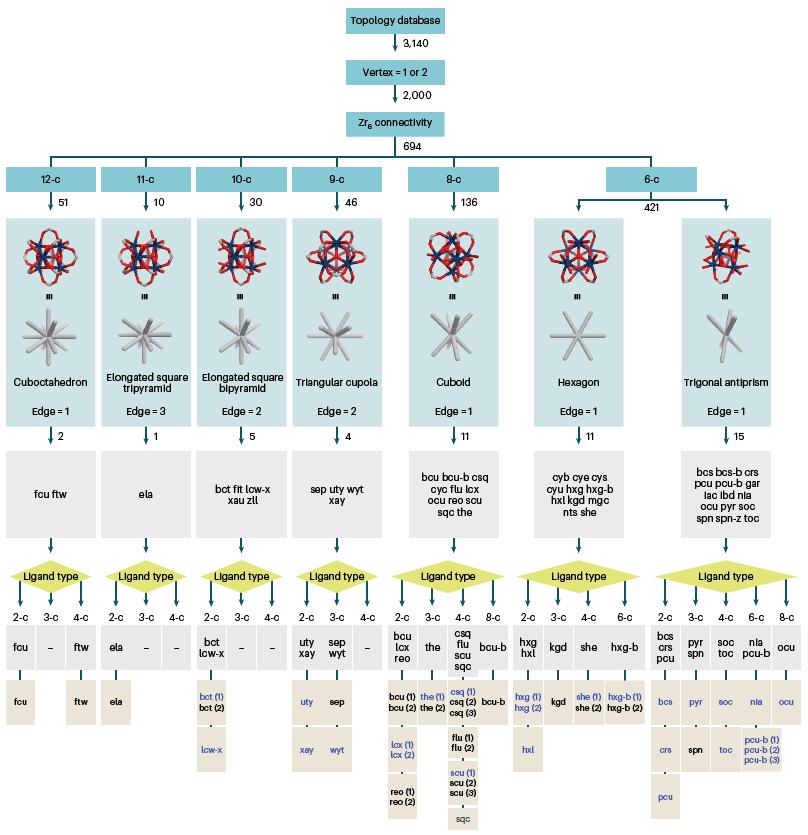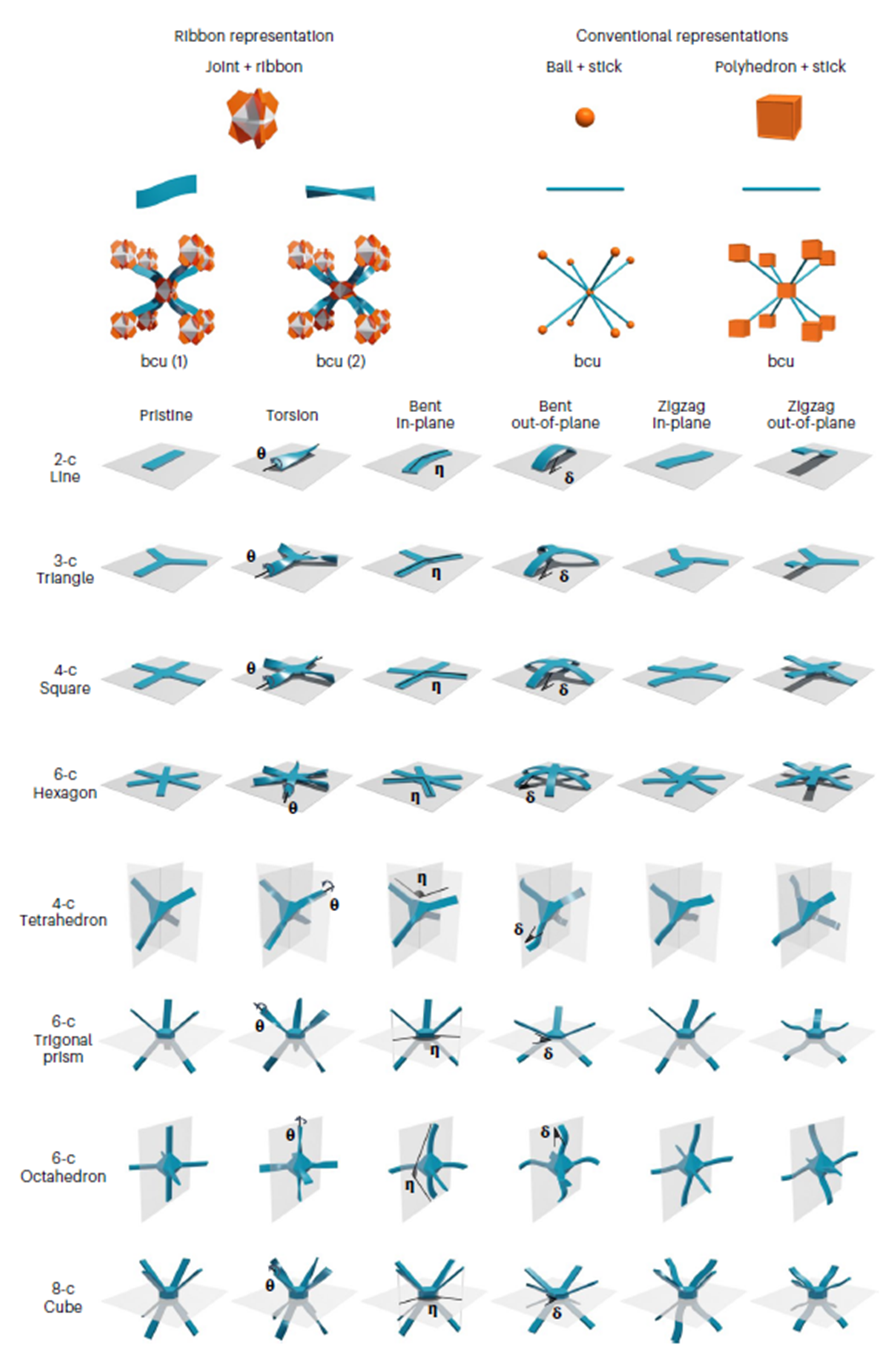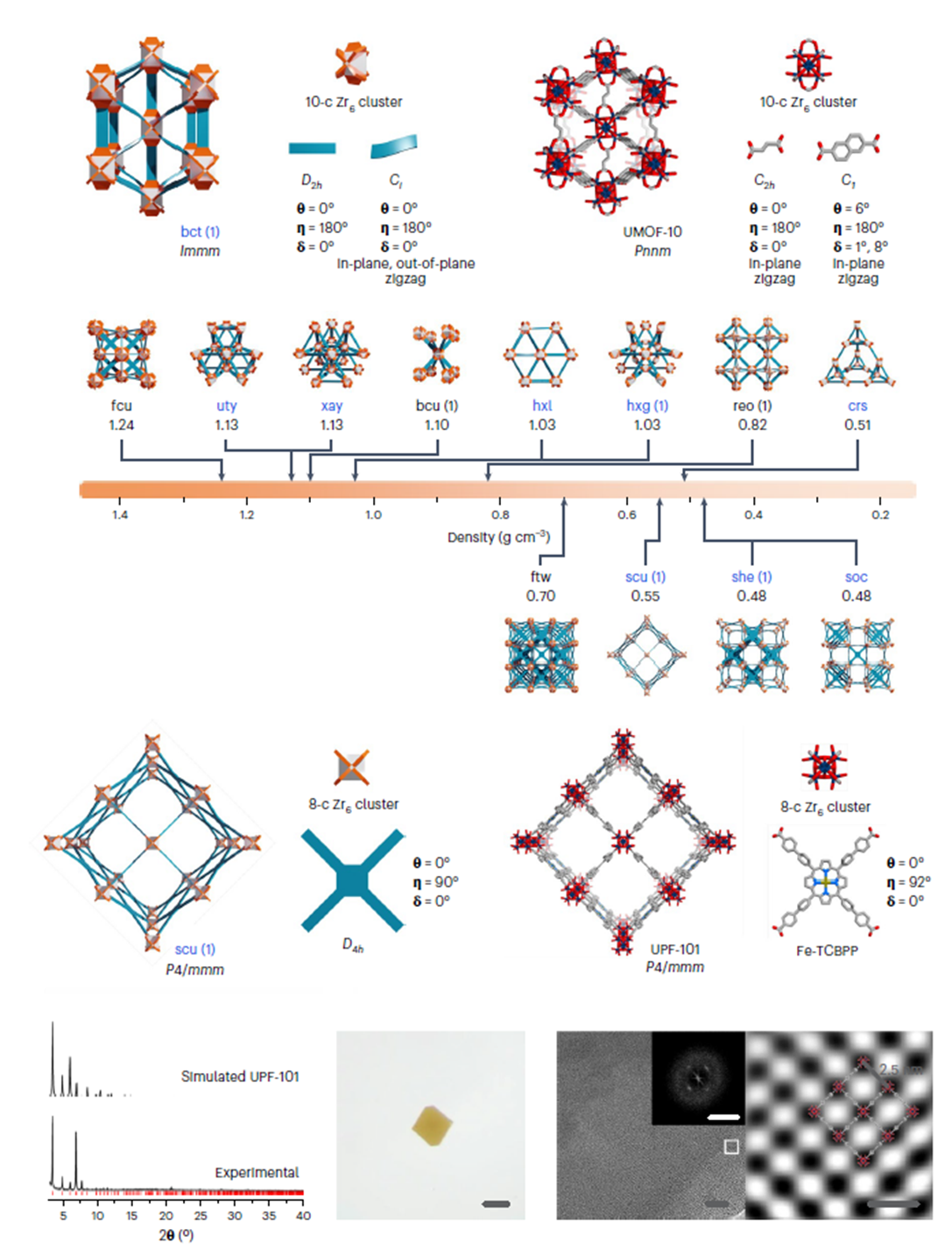Abstract
A groundbreaking new method was developed that promises to revolutionize the discovery of metal-organic frameworks (MOFs). This innovative strategy, known as the "Up-Down Approach," has the potential to dramatically accelerate the creation of advanced materials.
A research team, led by Professor Wonyoung Choe in the Department of Chemistry at UNIST, has developed a novel strategy for designing MOFs. MOFs, which consist of metal clusters and organic molecules, are emerging as crucial materials for various applications, including carbon dioxide capture, storage, and catalysis. Their primary advantage lies in their customizable structure, which enables the creation of materials with tailored properties.
 Figure 1. Schematic image, illustrating the simplified process of the steps of the UDA compared with those of conventional bottom-up and top-down approaches for new MOF discovery.
Figure 1. Schematic image, illustrating the simplified process of the steps of the UDA compared with those of conventional bottom-up and top-down approaches for new MOF discovery.
Traditionally, MOFs have been designed using either a bottom-up or top-down approach. The bottom-up approach begins by selecting the metal clusters and organic ligands, followed by the exploration of potential structures. In contrast, the top-down approach begins with a desired structure and identifies the appropriate components to achieve the target structure.
 Figure 2. Flowchart for screening possible topologies of Zr6-based MOFs.
Figure 2. Flowchart for screening possible topologies of Zr6-based MOFs.
The Up-Down Approach merges these methodologies, facilitating a broader exploration of structures based on metal clusters before selecting suitable organic ligands. This approach overcomes the limitations of traditional methods, which are often constrained by predefined components and structural restrictions. By enabling new combinations of diverse elements, the Up-Down Approach opens new avenues for discovering novel structures that were previously inaccessible.
 Figure 3. Ribbon representation to visualize molecular configurations and transformations of ligands.
Figure 3. Ribbon representation to visualize molecular configurations and transformations of ligands.
By applying this strategy, the team identified 26 new zirconium-based MOFs, which are renowned for their high chemical stability. They successfully synthesized two of these new structures, demonstrating the effectiveness of the Up-Down Approach. Additionally, the team employed a "Ribbon Representation" to visualize the precise geometric features of organic ligands, further enhancing the accuracy and efficiency of the design process.
 Figure 4. Ligand angle distribution for molecular configurations.
Figure 4. Ligand angle distribution for molecular configurations.
Jiyeon Kim, the first author of the study, stated, "The Up-Down Approach provides a powerful tool for rapidly exploring and developing new materials with a range of chemical properties. This method significantly enhances the efficiency of material development research."
Co-first author Dongsik Nam added, "This research paves the way for the discovery of innovative materials that can be applied across various fields, including catalysis, gas storage, and environmental remediation."
 Figure 5. Discovery of new Zr6-based MOFs with bct (1) and scu (1) configurations.
Figure 5. Discovery of new Zr6-based MOFs with bct (1) and scu (1) configurations.
Professor Wonyoung Choe remarked, "Our study represents a major advancement in expanding the chemical space of MOFs, significantly broadening their potential applications." He adds, "We anticipate that this will mark a transformative moment in functional materials research."
This research received support from the National Research Foundation of Korea (NRF) and UNIST, with collaborative efforts from Professor Jihan Kim's team at Korea Advanced Institute of Science and Technology (KAIST). The findings have been published in Nature Synthesis, a prestigious journal in the field, on September 5th, 2024.
Journal Reference
Jiyeon Kim, Dongsik Nam, Hye Jin Cho, et al., "Up-down approach for expanding the chemical space of metal-organic frameworks," Nature Synthesis, (2024).






